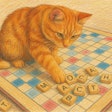
Saying that someone wouldn’t hurt a fly is rarely true. Although I usually allow spiders to go about their business preying on pests in my home, I’ll readily swat a fly hovering over my apple or a mosquito alighting on my arm. Mosquitos are the planet’s deadliest animals, considering their propensity for spreading malaria, dengue and other life-threatening illnesses. Technically, hitchhiking parasites, viruses and other pathogens are to blame. Nevertheless, few oppose eradicating mosquitos and other disease vector insects. However, human sympathy for insects may take on a different tone when considering insects raised as pet food ingredients.
Insects are animals too, and six-legged livestock may be entitled to similar protections to traditional farmed animals with fur or feathers. The question of animal welfare revolves around suffering and sentience. In the case of insects, that involves determining if insects are aware and can feel pain like other animals, as opposed to being automatons driven only by cause-and-effect chemical reactions. While religious and philosophical schools of thought have differed on this issue throughout history, observation and evidence suggest that all animals, humans included, perceive the world using similar mechanisms. Although differing by degrees, animals all may feel sensations and have some cognitive ability.
“The science of invertebrate animal sentience, and more precisely insect sentience, is much less developed than the science of vertebrate animal sentience (which is already scarce), given a serious lack of funding,” Francis Maugère, political advisor with the Eurogroup for Animals, “However, a growing body of evidence suggests that some orders of insects are likely, or very likely, to feel pain and pleasure, and experience a sentient life. In 2023, the Eurogroup for Animals coordinated a Scientific Declaration on Insect Sentience and Welfare with specialized researchers and philosophers to summarize the available science."
Maugère pointed to a 2024 New York University publication, the New York Declaration on Animal Consciousness. New York University researchers concluded that empirical evidence supported the contention that all vertebrates and at least many invertebrates likely experience consciousness. Recent works on the welfare needs of the most frequently farmed species, such as black soldier fly, mealworm and crickets, can help develop these standards, he said.
“Many producers are already thinking hard about this, paying close attention to the impacts of stocking density, feed type, relative humidity, temperature, and other variables on insect mortality, feed conversion rates, and other coarse-grained indicators of welfare,” Bob Fischer, professor of philosophy at Texas State University said. “However, as we learn more about insect stressors and preferences, there will be opportunities to improve the conditions of these animals further.”
Guidelines for applying animal welfare standards to insect farms
Fischer referred to the work of the Barrett Lab at Indiana University. The Lab has produced reviews that suggest some areas where producers can reduce stressors on the insects they rear. For example, adult black soldier flies are typically starved after laying their eggs. It would be better if they were either fed or euthanized, he said, as either option would reduce negative welfare impacts.
The five domains model for animal welfare can guide insect farms, Maugère said.
- Nutrition
- Physical Environment
- Health
- Behavioral Interactions
- Mental State
When applied to insects, he said these welfare standards may include instantaneous slaughter methods, use of recommended anesthetics or stunning before slaughter or depopulation, avoidance of pre-slaughter starving without safety justifications, bans on inappropriate or hazardous feeding substrates, provision of adequate nutrition and hydration for all life stages, interdiction of genetic manipulation that prevents the expression of natural behavior (inability to flying, physiological overgrowth), appropriate rearing densities, avoidance of stress-inducing light for photophobic species, species-appropriate temperature and humidity levels, and disease monitoring, prevention and treatment protocols.
“Insects, like all other animals, have many preferences that can be frustrated without necessarily causing pain,” Fischer said. “For instance, they might prefer to be close to conspecifics (to a point), prefer certain food types, prefer not to be exposed to light, prefer certain temperature and humidity ranges, etc. By providing insects with what they prefer, their welfare can be enhanced.”
Despite the evidence that insects have specific welfare needs, there is not yet a scientific consensus.
“We cannot say with absolute certainty that insects, and more precisely insects reared for food and feed, feel pain and have welfare needs,” Maugère said. “But given this growing body of evidence, and in light of the sheer number of individuals affected by insect farming, we call for a precautionary approach to be adopted. Insect farming should be considered animal farming and abide by welfare rules in a species-specific manner. The importance of this topic is already recognised by industry representatives, even though no comprehensive standards have been developed and implemented at industry or legislative levels.”
Even without scientific consensus or industry standards, pet food ingredient producers may benefit from considering farmed insects’ welfare. Pet owners tend to show greater concern for animal welfare than those who don’t share their homes with companion animals. Ethical treatment of lowly insects could be a means of differentiating a pet food brand in a market crowded with sustainability and animal rights claims.
 Created by Tim Wall using DALL-E
Created by Tim Wall using DALL-E
















